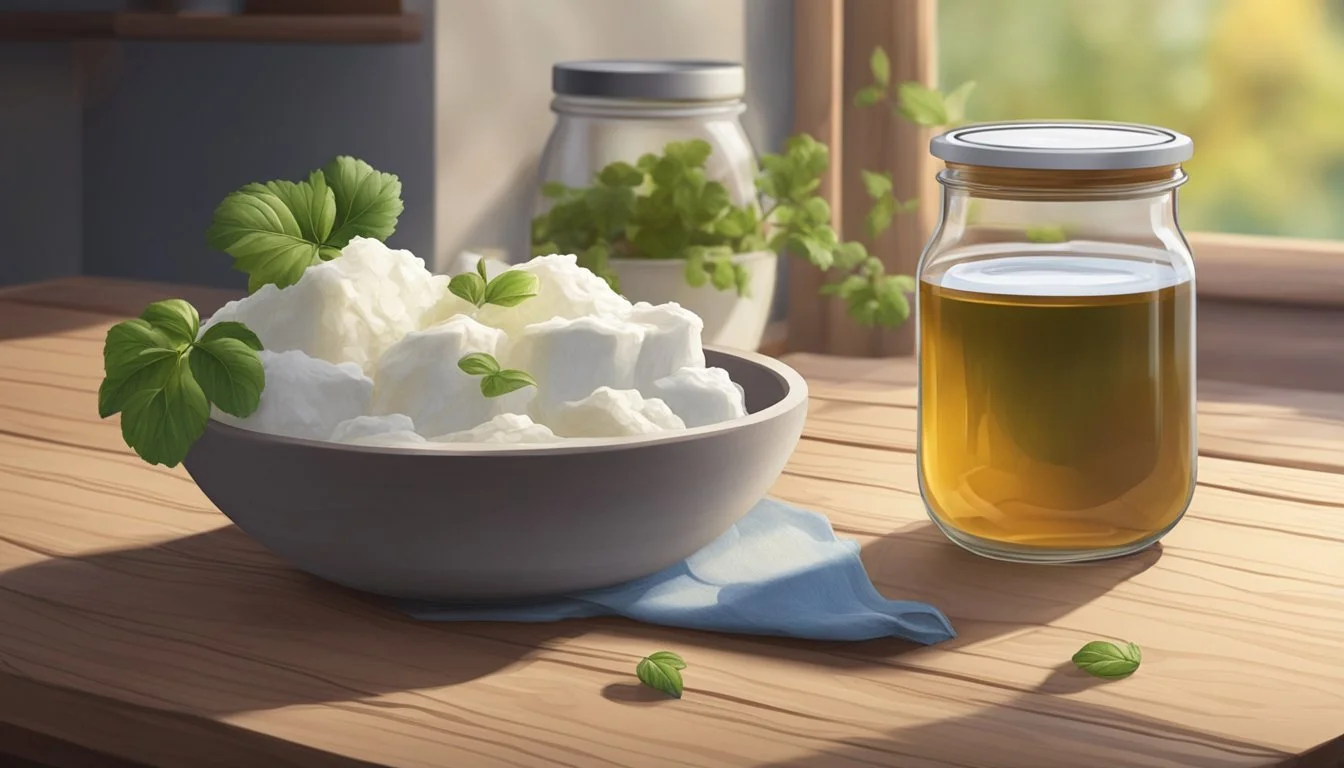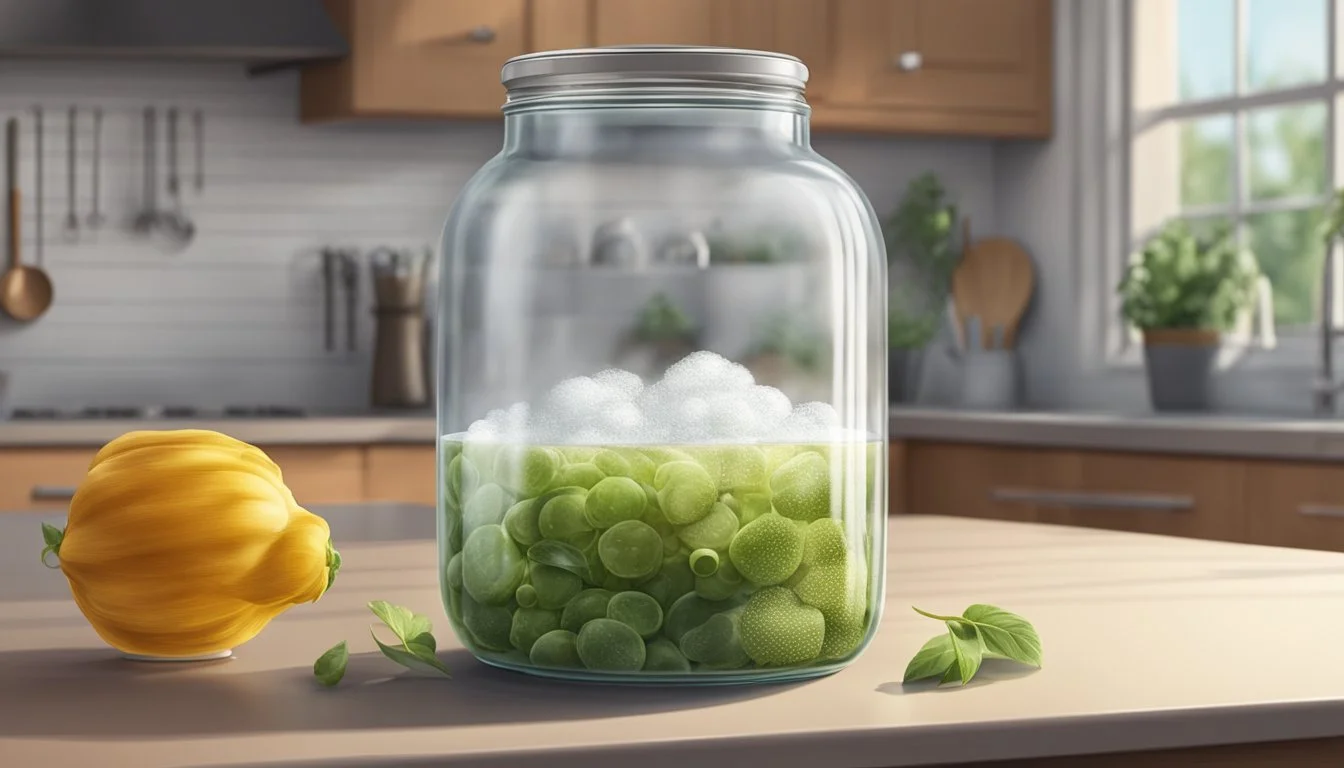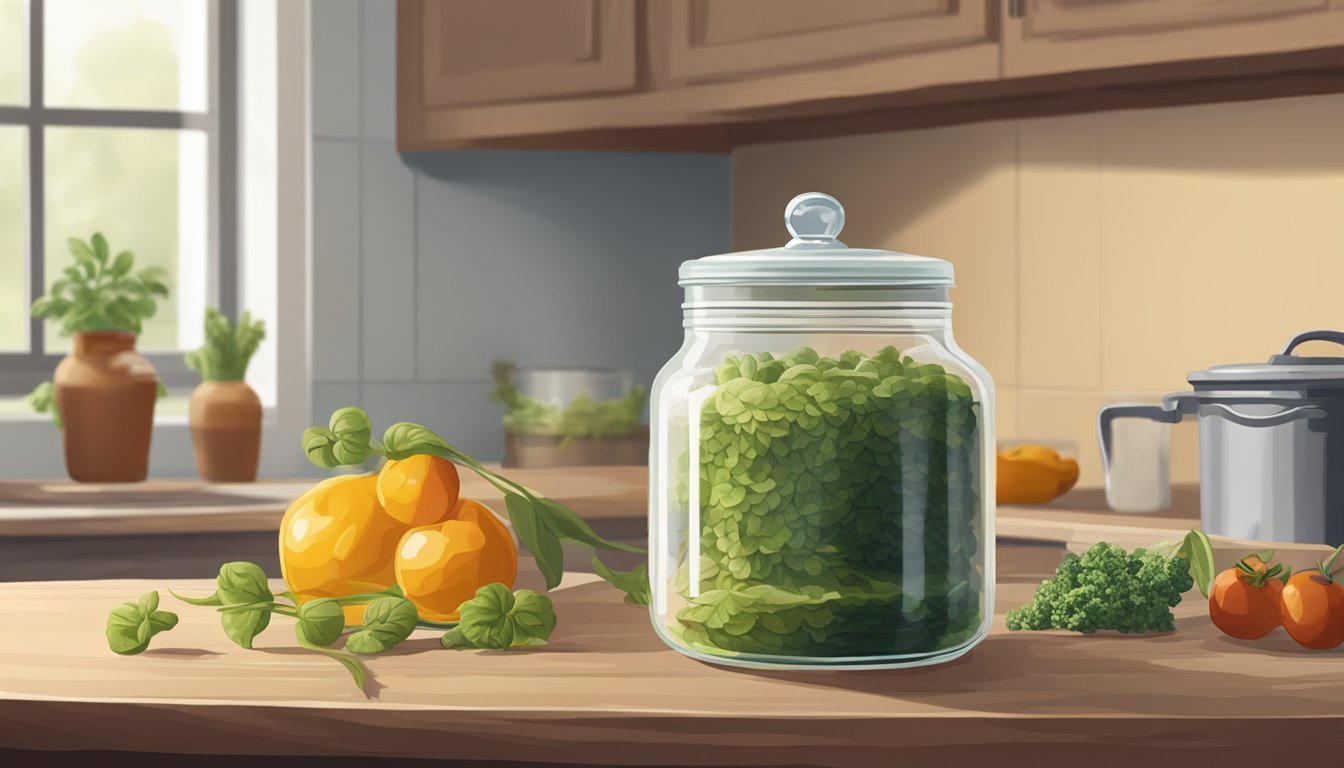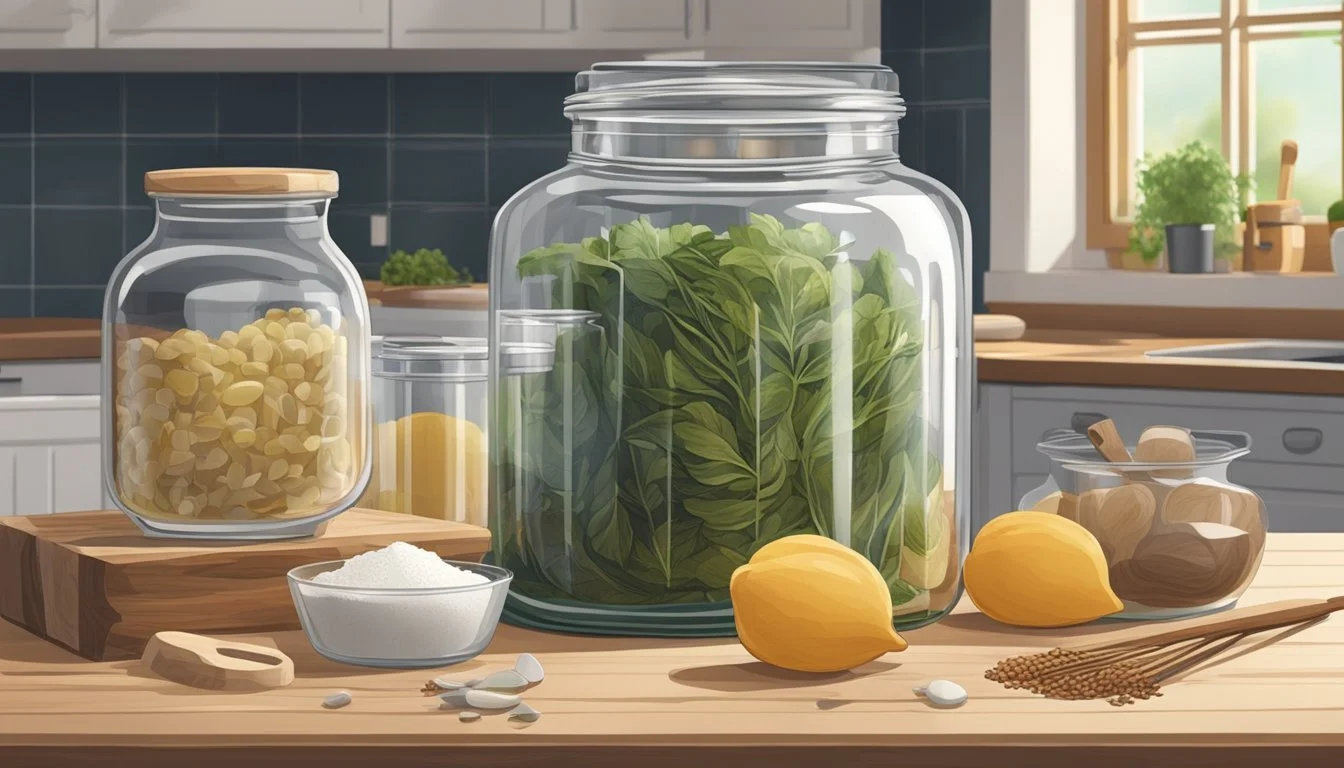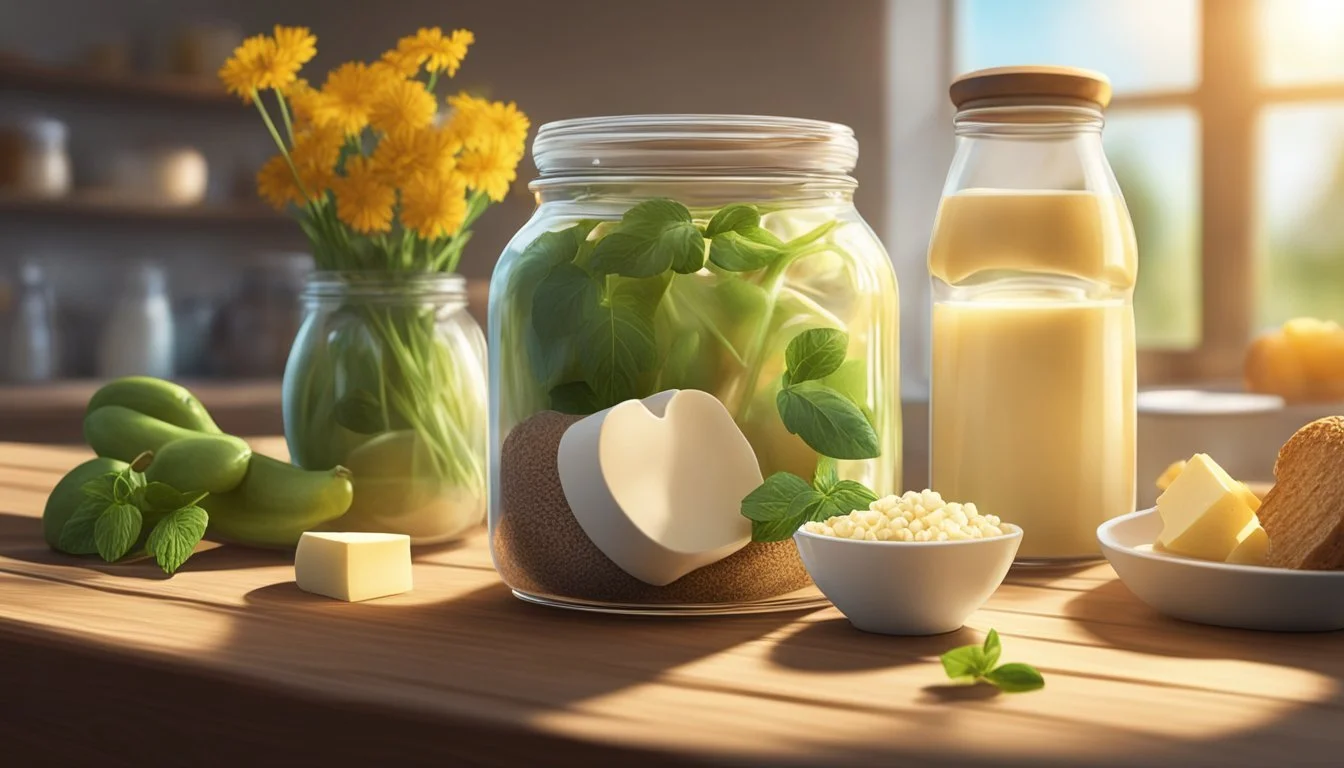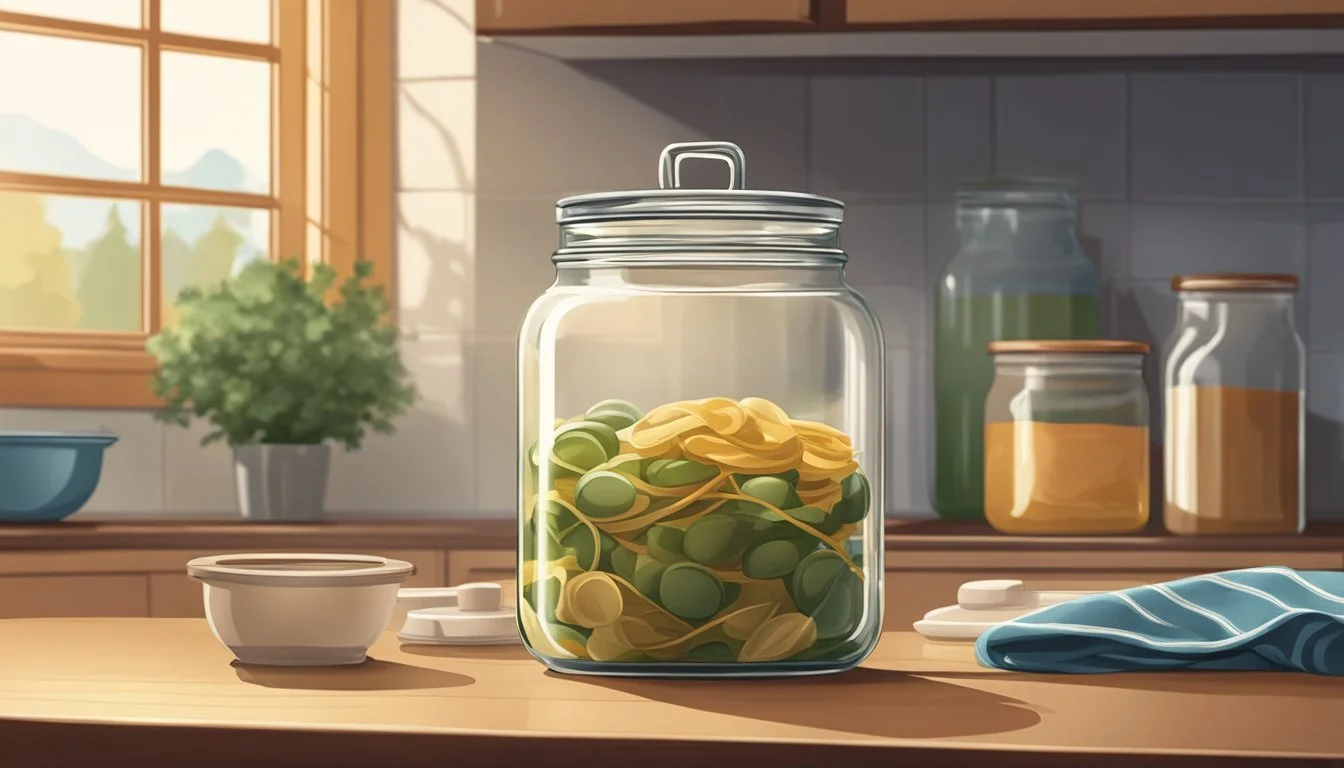How to Ferment Viili
Your Guide to Making Finnish Fermented Milk
Viili is a fermented milk product with origins in Finland, prized for its unique texture and health benefits. As a traditional staple, it is enjoyed for its mild flavor and custard-like consistency, which sets it apart from other fermented dairy products. The fermentation process not only enhances the taste but also increases the milk's shelf life and adds beneficial bacteria that are good for the gut. Viili is part of the broader family of cultured dairy products like kefir and yogurt but stands out due to its gelatinous nature and the fact that it can be made at room temperature without the need for heat incubation.
The making of viili is straightforward, requiring only a small amount of live viili culture to be introduced to fresh milk. The culture contains specific lactic acid bacteria and yeasts which work symbiotically to thicken the milk and create the characteristic stretchy texture. Once inoculated, the mixture is simply left at room temperature for 12-24 hours during which the fermentation magic happens; the milk transforms into viili without any strenuous effort or complex equipment. This simplicity has allowed viili to endure as a homemade favorite in Finnish households, passed down through generations.
History and Tradition of Viili
Viili is a testament to the rich culinary heritage of Finland and its neighboring Nordic countries. It stands as a unique dairy product with centuries-old roots in Scandinavian tradition.
Origins in Finland
Viili’s origins can be traced back to Finnish rural life, where it emerged as a practical means to preserve milk. Its mesophilic nature meant that it could be fermented at room temperatures, an advantage in a region where such conditions were prevalent for much of the year. In Finland, viili is not just a food item; it is a part of their cultural identity, often made at home using heirloom cultures passed down through generations.
Traditional Making: Large wooden buckets in Finnish farms were frequently used for the fermentation process, with each household nurturing their unique strand of culture.
Preservation Method: Fermentation was a natural preservative in a time before refrigeration, ensuring that milk remained consumable for longer periods.
Viili in Nordic Culture
Within the broader Nordic culture encompassing Scandinavia, viili remains a shared culinary tradition. Consumed in countries such as Sweden, Norway, and other areas in the Nordic region, its place is well-established in the daily diet.
Texture and Taste: An intriguing aspect of viili is its characteristic 'ropy' texture, a malleable consistency adored in the Scandinavian diet.
Cultural Exchange: While traditionally Finnish, viili's popularity crossed borders into Sweden (where it is known as filbunke) and Norway, illustrating the fluidity of food heritage across these interconnected countries.
The significance of viili goes beyond its taste and nutritional value; it encapsulates a piece of the Nordic way of life, continuing to represent the simplicity and sustainability of traditional food practices.
Understanding Fermentation
In the context of Viili, an understanding of fermentation is essential as it is the process by which lactic acid bacteria transform milk into a probiotic-rich food.
Fermentation Basics
Fermentation refers to the metabolic process where microorganisms such as bacteria, yeast, or fungi convert organic compounds - in this case, lactose found in milk - into alcohol or acids. This process preserves the food and creates various beneficial by-products, including probiotics. In the case of Viili, lactic acid bacteria play the central role, producing a tangy flavor and thickened texture.
Role of Bacteria in Viili
Viili fermentation is driven by a specific group of lactic acid bacteria. These beneficial bacteria are responsible for converting lactose into lactic acid, which acts as a natural preservative, inhibiting harmful bacteria's growth. They also impart the characteristic mildly sour taste and contribute to Viili's potential health benefits as a source of probiotics.
Mesophilic Cultures Explained
The mesophilic cultures used for fermenting Viili operate at moderate temperatures, typically between 20-30°C (68-86°F). Unlike thermophilic cultures that require heat, these mesophilic cultures ferment milk at room temperature. The fermentation process with mesophilic cultures does not necessitate any heat, which distinguishes Viili from other types of fermented dairy that require incubation at higher temperatures.
Health Benefits of Viili
Viili, a traditional Finnish fermented milk product, serves as more than just a culinary delight; it offers a variety of health benefits due to its rich probiotic content and nutritional value.
Probiotic Properties
Viili is teeming with beneficial bacteria that classify it as a probiotic food. These bacteria enhance gut health by maintaining a balanced gut microbiota. The regular consumption of probiotic-rich viili may promote better digestion and strengthen the immune system.
Nutritional Value
Viili provides a host of essential nutrients in each serving. It contains protein, which is fundamental for muscle repair and growth, and calcium, crucial for bone health. Additionally, viili is a source of several vitamins that contribute to overall well-being.
Protein: Essential for cellular repair and enzymes' functions.
Calcium: Vital for bone density and muscular function.
Vitamins: Includes B and K vitamins, enhancing energy metabolism and blood clotting.
Digestive and Immune Support
The probiotics found in viili play a crucial role in digestion and immune function. By contributing to a healthy gut flora, the risk of gastrointestinal issues is reduced. Furthermore, a robust gut barrier can prevent pathogens from entering the body, thereby bolstering immunity.
Potential in Reducing Hypertension
Studies suggest that consumption of fermented dairy products like viili may be associated with reduced blood pressure. The bioactive peptides generated during fermentation possess anti-inflammatory properties which, in turn, might contribute to cardiovascular health by aiding in the management of hypertension.
Preparation of Viili
The preparation of Viili, a traditional Finnish fermented milk, involves careful selection of milk, introducing a Viili starter, and allowing the mixture to culture at room temperature to achieve its unique texture and flavor.
Selecting the Right Milk
To begin, one must choose the appropriate type of milk for culturing Viili. Whole milk is preferred due to its fat content, which contributes to the characteristic texture of Viili. Raw milk can be used for its natural bacteria, however, pasteurized milk is also suitable and more commonly available. It is important to ensure that the milk is not ultra-pasteurized or 'UHT' as that process significantly reduces the amount of beneficial bacteria necessary for fermentation.
Using a Viili Starter
A Viili starter is essential for fermentation. One can obtain a freeze-dried Viili starter culture or use a tablespoon of pre-made Viili yogurt as a starter. The process is as follows:
Combine 1 teaspoon of dehydrated Viili starter culture or 1-2 tablespoons of pre-existing Viili yogurt into a pint of milk.
Stir the mixture well to ensure the starter is evenly distributed.
Culturing at Room Temperature
Once the starter is mixed with the milk:
Cover the container loosely to allow airflow while preventing contaminants. A coffee filter, cheese cloth, or loose-fitting lid may be used.
Place the container at room temperature (about 70°F or 21°C) for 12-24 hours. During this time, the milk will thicken and ferment.
After the culturing process, place the Viili in the refrigerator for another 24-48 hours to halt fermentation and cool the Viili. This also allows the flavor to develop further.
Fermented Viili should have a thick consistency and a mild, tangy taste. It is important to reserve a portion of the Viili to use as a starter for future batches.
Viili's Distinctive Texture and Taste
Viili is renowned for its unique texture and mild flavor, making it a distinguished member of the fermented milk family. This section explores the signature velvet-like surface of Viili and succinctly outlines its flavor characteristics.
Achieving the Classic Velvet-like Surface
Viili's texture is one of its most celebrated features, characterized by its velvet-like surface that is both viscous and elastic. This texture is created through a fermentation process that encourages the development of a gelatinous consistency. The starter culture is crucial in achieving the classic texture. When preparing viili, one should ensure that the culture is evenly distributed throughout the milk before the fermentation process begins. As viili sets, it develops the iconic ropey and viscous nature which can be easily stretched when lifted with a spoon.
Flavour Profile Description
The taste of viili is likewise distinctive, often described as mild and subtly sweet. Unlike many fermented dairy products, viili does not possess a sharp tanginess, instead maintaining a gentle flavor that pairs well with sweet and savory complements alike. It is versatile and can be personalized with various additions, such as fruit or honey, without overpowering the inherent taste of the fermented milk. This mild taste also makes it an approachable option for those who might be less accustomed to fermented dairy products.
Incorporating Viili into Your Diet
Viili, a traditional Finnish cultured milk product, can easily enhance various meals with its creamy texture and tangy flavor. It is versatile in its use and can be a healthy addition to anyone's diet.
Smoothies and Breakfast Options
For an effortless and nutritious breakfast, incorporating viili into smoothies is ideal. One can simply blend it with their favorite fruits, such as berries or bananas, to create a smoothie rich in probiotics. Alternatively, viili can be used as a creamy base for muesli or granola, offering a balance of macronutrients and a more digestible option than regular milk.
Fruit Smoothie Recipe:
1 cup viili
1/2 cup mixed berries
1 banana
A drizzle of honey (optional)
Blend until smooth
Sauces and Side Dishes
Viili lends itself well to the creation of sauces and dressings that can accompany a variety of main dishes. Its unique texture enhances the mouthfeel of cold sauces and can also be used to thicken and add a slight tanginess to hot dishes. As a side, it can be served as a dip mixed with herbs and spices, perfect for raw vegetables or pita bread.
Herb Dip Recipe:
1 cup viili
1 tablespoon chopped dill
1 tablespoon chopped chives
Salt and pepper to taste
Combine all ingredients and serve chilled
Healthy Snacks and Desserts
For those seeking healthier snack or dessert options, viili can be a standout ingredient. Its mild taste complements a variety of sweet and savory flavors, making it a perfect base for parfaits or as a simple, guilt-free dessert topped with fresh fruit or a sprinkle of cinnamon.
Fruit Parfait Recipe:
1 cup viili
1/2 cup granola
1/2 cup fresh fruit of choice
Layer viili, granola, and fruit in a glass and serve
Advanced Tips and Variations
Mastering the art of viili fermentation allows enthusiasts to experiment with the taste, texture, and nutritional profile. Here are several sophisticated techniques and variations for those looking to take their viili preparation to the next level.
Creating Flavored Viili
To infuse viili with vibrant flavors, one can add fruits or sweeteners during the fermentation process. For instance:
Fruit: Mix in fresh or dried fruit like strawberries or raisins after the initial fermentation period, then refrigerate.
Sweeteners: Stir in natural sweeteners, such as honey or maple syrup, before serving to enhance the flavor.
It's essential to add these flavors after fermentation to ensure they do not interfere with the bacterial cultures.
Adjusting Fermentation Time and Temperature
The flavor and consistency of viili are significantly influenced by fermentation time and temperature. Follow these insights:
Temperature: A steady room temperature around 70°F (21°C) is ideal for promoting consistent fermentation.
Time: For milder viili, a shorter fermentation period of 12 hours may suffice, whereas a tangier flavor can be achieved by extending it up to 24 hours.
Adjusting these parameters can result in a customized texture ranging from smooth to gelatinous, and a taste that fits personal preferences.
Exploring Viili Derivatives
Those looking to diversify their fermented dairy product repertoire can explore variations of traditional viili:
Finnish Kermaviili: This creamier derivative can be made by using a mix of whole milk and heavy cream.
Non-dairy Viili: For lactose-intolerant individuals, coconut milk or other non-dairy substitutes offer a suitable alternative.
By experimenting with milk types and starter cultures, one can create a range of viili-based recipes to cater to different dietary needs and taste profiles.
Preservation and Storage
Proper preservation and storage are crucial for maintaining the quality and probiotic content of Viili. Ensuring that this unique Finnish fermented milk product retains its characteristic texture and flavor requires attention to detail during the storage process.
Storing Freshly Made Viili
Once an individual has made Viili, it is best stored in a glass jar or a mason jar with a loose lid to allow gases produced during fermentation to escape. The container should then be placed in the refrigerator where the cool environment slows down the fermentation, preserving the Viili's quality. Typically, it's recommended to store Viili for 24-48 hours in the refrigerator before consumption, as it allows flavors to develop further.
Extending Shelf Life
Viili's shelf life is naturally extended due to the presence of beneficial probiotic cultures. To maximize longevity:
Seal the container properly after the initial fermentation period to prevent contamination.
Maintain a consistent refrigerator temperature to ensure slow and stable fermentation.
By following these careful storage guidelines, consumers can enjoy their freshly made Viili while preserving its unique qualities and live cultures.
Cultural Significance and Modern Adaptations
In Finland, viili enjoys a revered status, integral to both daily life and traditions, while its unique qualities have spurred a worldwide curiosity, leading to its adoption far beyond Scandinavian borders.
Viili in Finnish Homes and Traditions
Viili, a traditional Finnish yogurt, represents more than just a fermented milk product; it is a cherished cultural artifact. In Finnish households, making viili is a practice passed down through generations, often involving the use of wooden buckets for fermentation, a nod to historical methods. The taste of viili is unique due to the specific lactic acid bacteria that contribute to its fermentation process. Families across Finland have long valued viili not only for its flavor and texture but also as a symbol of home culinary tradition. On farms, the making of viili used to be—and in some places, still is—a daily routine, reflecting self-sufficiency and the importance of using local ingredients.
Adoption outside Scandinavia
The allure of viili extends beyond its homeland. Its simplicity of preparation and distinctive texture have led to a growing interest internationally. Outside Scandinavia, enthusiasts of fermentation have embraced viili, adapting the process to suit local climates and tastes. This Finnish yogurt has found a place in the hearts of many who appreciate fermented foods, leading to sharing of cultures and culinary experimentation. The spread of viili across global communities underscores its versatility and the universal appeal of fermented delicacies.
Environmental Benefits and Ethical Considerations
Fermenting viili, a traditional Finnish dairy product, aligns well with environmental sustainability and ethical sourcing. These practices not only contribute to the ecological balance but also resonate with the moral values related to animal welfare and fair trade.
Sustainable Dairy Practices
Sustainable dairy practices are essential in the production of viili. Organic farming methods play a significant role in maintaining soil health and reducing the carbon footprint associated with dairy farming. For producing viili, utilizing organic milk from cows that are fed natural, non-GMO feed, can lead to a reduction in environmental pollutants.
Reduced Chemical Usage: Organic milk producers apply minimal chemical fertilizers and pesticides, relying instead on crop rotation and other natural farming methods.
Animal Welfare: Sustainable practices ensure higher welfare standards for cows, including access to outdoor spaces and a more natural living environment.
A focus on sustainable approaches often involves looking at the entire supply chain, from the feed used for cows to the packaging of the viili itself.
Ethical Sourcing of Milk
Ethical sourcing of milk is a crucial factor when fermenting viili. This not only involves considering the sustainability of farming practices but also, the treatment of dairy cows and the economic practices of sourcing.
Fair Compensation: Ensuring that dairy farmers receive fair compensation for their milk is a core principle of ethical sourcing.
Transparency in Sourcing: Consumers increasingly demand transparency, which includes clear labeling about the source of the milk and the farming methods used.
Using raw milk from local, trusted farms may support regional economies and reduce food miles, further contributing to the environmental benefits of homemade viili. Ethical sourcing champions respect for both the producer and the animal, advocating for humane treatment throughout the milk's journey from farm to table.
Frequently Asked Questions
In the realm of fermented dairy, Viili stands out for its unique texture and ease of culturing at home. This section aims to shed light on the nuances that differentiate Viili from similar products, address common questions about its preparation and safety, and guide you through obtaining the right starter cultures for making Viili.
Comparing Viili to Other Fermented Dairy
Viili is often regarded as a cousin to more commonly known fermented dairy like yogurt and kefir, but there are distinct differences. Viili possesses a unique, velvet-like consistency that sets it apart from Greek yogurt and regular yogurt, which are thicker and creamier. Unlike kefir, which can have a fizzy texture due to its carbonation, Viili has a milder flavor and a more stable, gel-like structure. Filmjölk is another Scandinavian fermented milk with a similar consistency to Viili, but it's slightly tangier.
Fermented Dairy Product: Viili
Texture: Velvety, gel-like
Flavor: Mild
Fermented Dairy Product: Greek Yogurt
Texture: Thick, creamy
Flavor: Rich, tangy
Fermented Dairy Product: Regular Yogurt
Texture: Creamy, smooth
Flavor: Variable
Fermented Dairy Product: Kefir
Texture: Fizzy, less viscous
Flavor: Tangy, yeasty
Fermented Dairy Product: Filmjölk
Texture: Viscous, slightly lumpy
Flavor: Tangy, similar to Viili
Addressing Common Concerns
When fermenting Viili, individuals often wonder about the safety and integrity of the fermentation process. It is crucial to maintain a clean environment to prevent unwanted bacteria from compromising the culture. One can ensure the safety of their Viili by using pasteurized milk and a trusted starter culture. Signs that the Viili has fermented properly include a consistent thickness and a pleasantly sour scent. If one notices off-putting smells or discoloration, it’s best to discard the batch.
Discovering Viili Starter Cultures
To begin making Viili, one must first acquire a starter culture. There are two primary types of cultures available: heirloom and commercial. Heirloom yogurt cultures, like Viili, can be propagated indefinitely from batch to batch, preserving their lineage. Companies such as Cultures for Health offer both heirloom and freeze-dried Viili starters. A fresh culture can be sourced from Finnish families if one has direct connections, or one can purchase dehydrated cultures that, once activated, continue to produce Viili with proper care.
Each starter culture has its specific instructions that must be followed for successful fermentation. Once established, ongoing fermentation requires just a small amount of Viili from the previous batch to inoculate fresh milk.


